Russian Baikal 48-Core CPU Die Shots, Benchmarks Emerge
Maybe Russia's last modern CPU
Twitter user Fritzchens Fritz has managed to obtain a sample of Baikal Electronics' 48-core BE-S1000 server-grade system-on-chip (SoC) and throw it under an infrared microscope to reveal its internals. In addition, some benchmark results of the SoC have surfaced.
Baikal Electronics has developed several system-on-chips for different devices to replace x86 processors from PCs and various compute appliances made in Russia. However, the pinnacle of the company's design prowess should have been its BE-S1000 server-grade SoC with 48 Arm Cortex-A75 cores, which the company managed to tape out and produce the first sample using TSMC's 16FFC fabrication technology, but which will never be released commercially due to sanctions against Russia for its invasion in Ukraine.
The Baikal BE-S1000 SoC comes in an FCLGA-3467 package to work in uniprocessor, 2-way, and 4-way symmetric multiprocessor (SMP) configurations. The processor's power consumption is about 120W, so it does not require any fancy cooling systems. The die size of the SoC is about 607mm², which is similar to the die size of Nvidia's AD102 graphics processor.
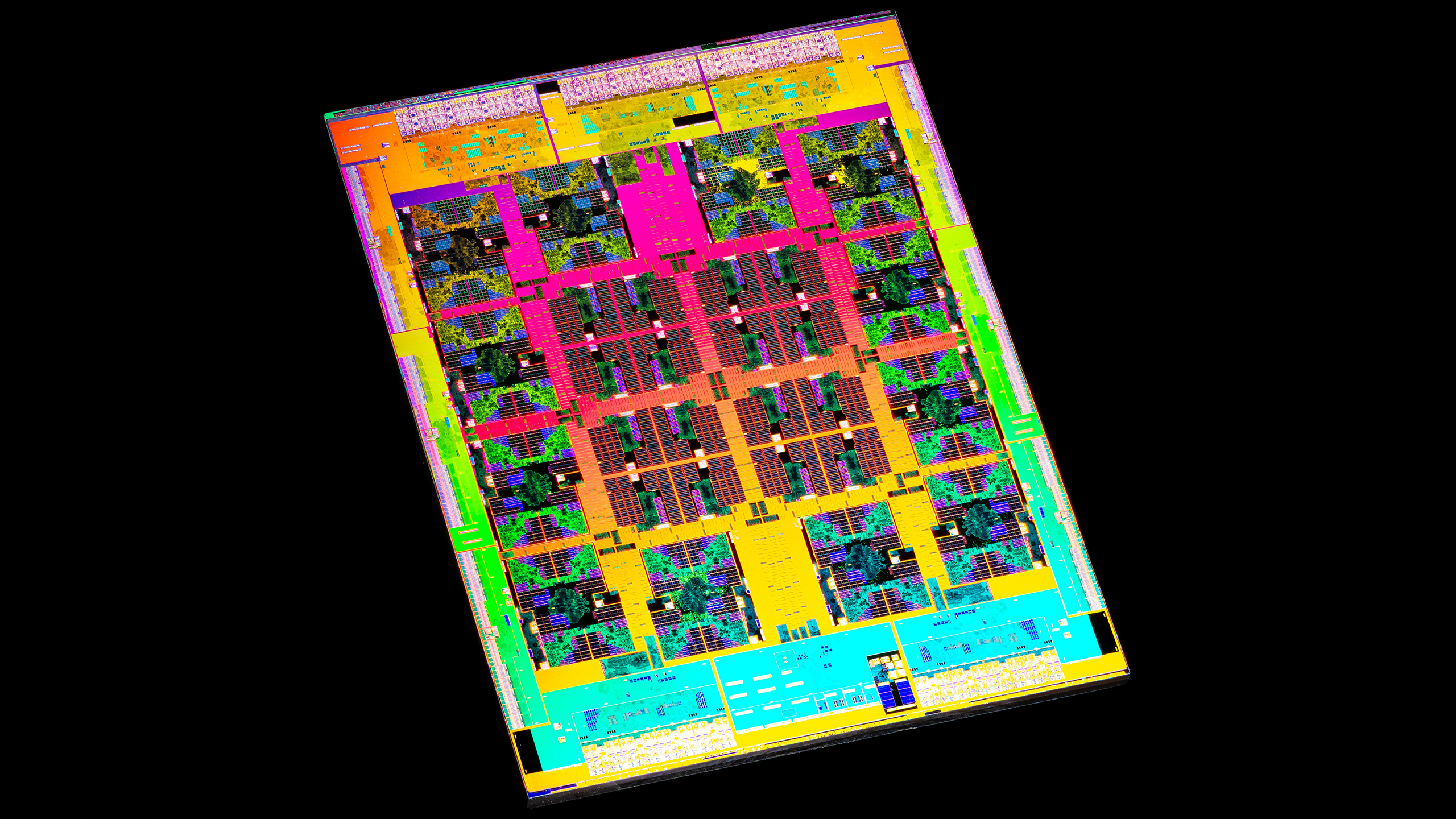
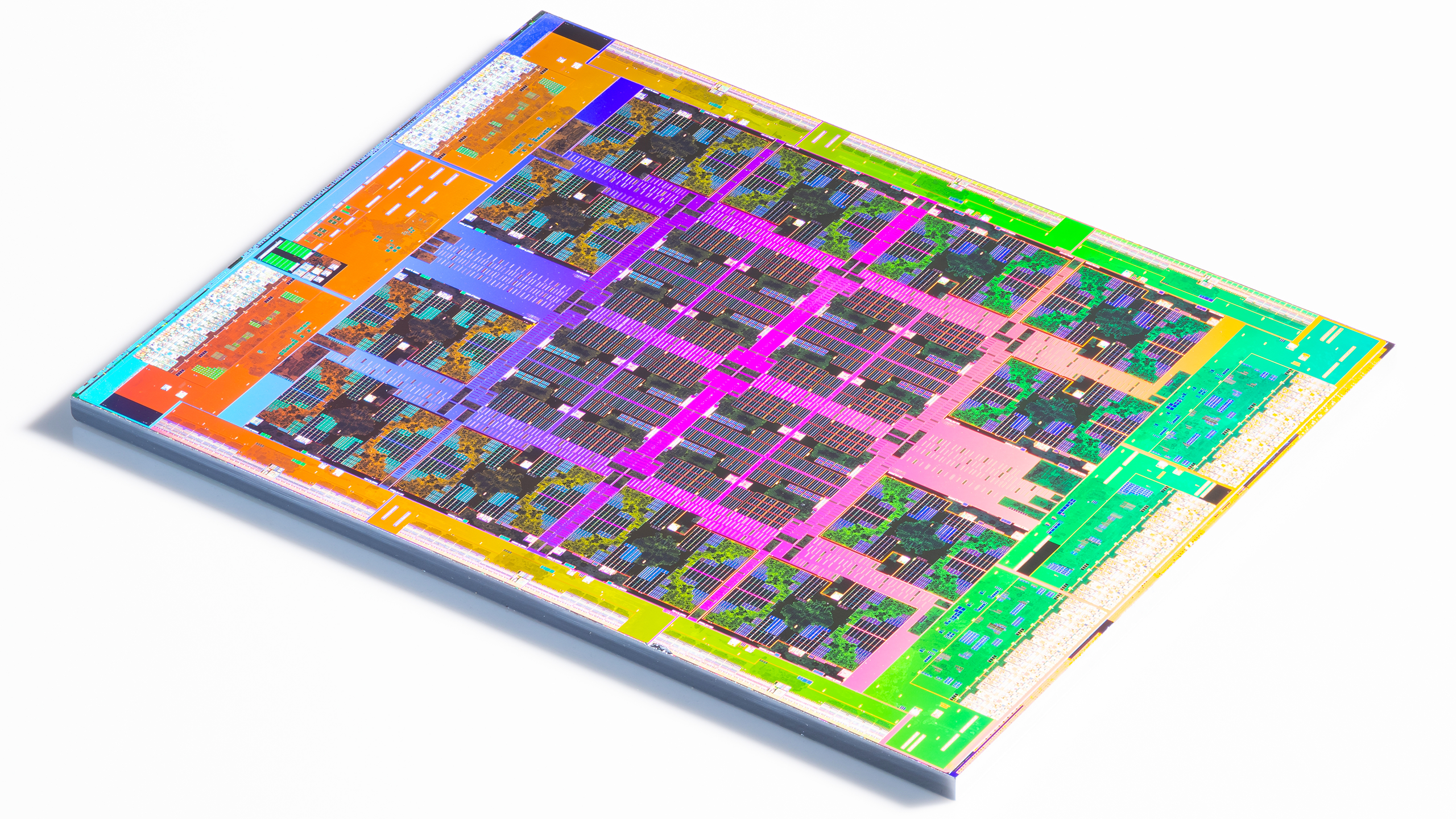
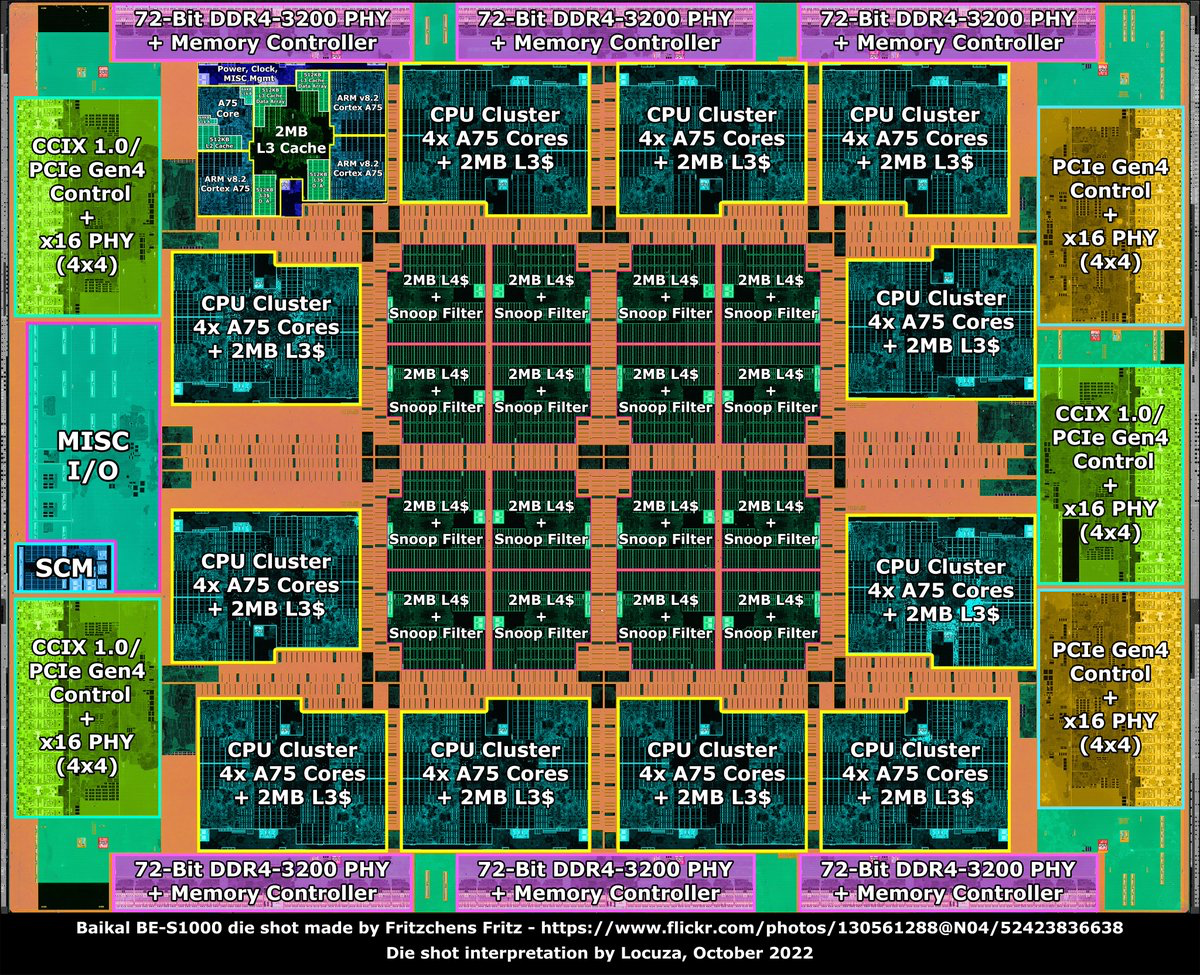
In addition to detailed die shots of the BE-S1000 processor displayed by Fritzchens Fritz, Locuza also published a chip floorplan with annotation.
The Baikal BE-S1000 organizes its 48 Art Cortex-A75 cores (operating at 2 GHz) across 12 clusters, each containing four Arm Cortex-A75 cores with 512KB L2 cache per core and 2MB of unified L3 cache. In addition, the 32MB of L4 cache organized in four blocks accompany the quad-core clusters.
The BE-S1000 processor also has six 72-bit memory interfaces supporting up to 768 GB of DDR4-3200 with ECC memory in total (i.e., 128GB per channel), five PCIe 4.0 x16 (4x4) interfaces (three of which support CCIX 1.0 to organize 2-way and 4-way SMP configurations), one USB 2.0 controller, two 1GbE interfaces, and various general purpose I/O. In addition, the SoC features an interconnect by a coherent mesh network.
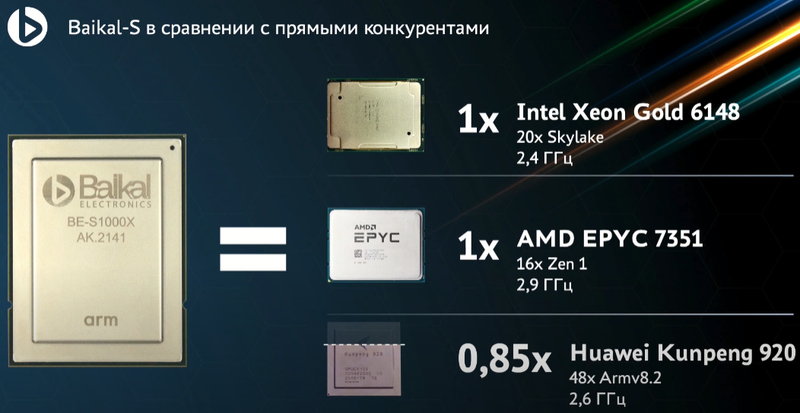
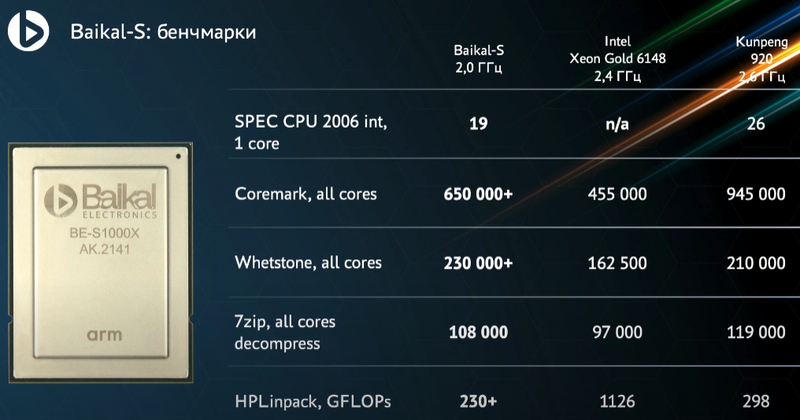
Baikal positioned its BE-S1000 against AMD's 16-core EPYC 7351 (2.90 GHz), Intel's 20-core Xeon Gold 6148 (2.40 GHz), and Huawei's 48-core Kunpeng 920 (2.60 GHz) in its marketing materials published by Locuza. As for performance, Baikal's slides indicate that the BE-S1000 that was supposed to hit the market in 2022 ~ 2023 would outperform Intel's Xeon Gold 6148 (from 2017) by a substantial margin in various kinds of benchmarks except for HPLinpack (a supercomputer benchmark), which is not particularly surprising given that Cortex-A75 was not designed to run high-performance computing workloads with an FP64 precision.
Get Tom's Hardware's best news and in-depth reviews, straight to your inbox.
In general, while the Baikal BE-S1000 looks like a brave attempt to develop a server-grade SoC that could replace processors from AMD and Intel for some machines, the chip would have arrived too late and been slower than then-contemporary CPUs from the x86 camp. Potentially, this could have been mitigated with the right price (at least for some cases). But because of Russia's bloody war in Ukraine, the BE-S1000 will remain an interesting artifact in the labs and will never become an actual product.

Anton Shilov is a contributing writer at Tom’s Hardware. Over the past couple of decades, he has covered everything from CPUs and GPUs to supercomputers and from modern process technologies and latest fab tools to high-tech industry trends.
-
artk2219 Seems like it may have been an interesting product, its a shame it'll never see a release, but what can you do? Russia committed itself to these actions, and they're going to be dealing with the consequences for decades to come.Reply